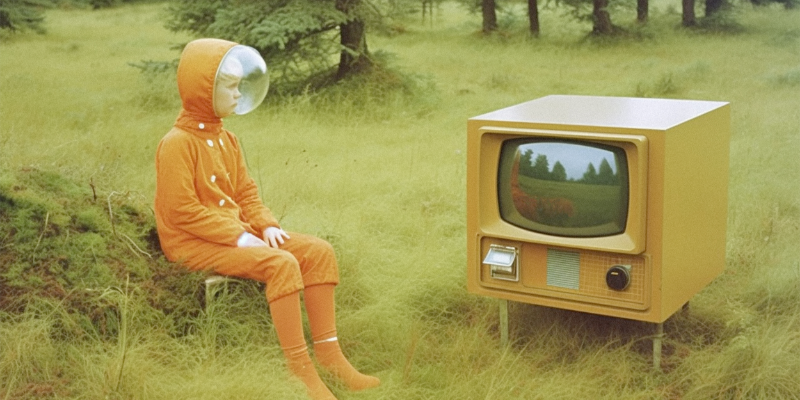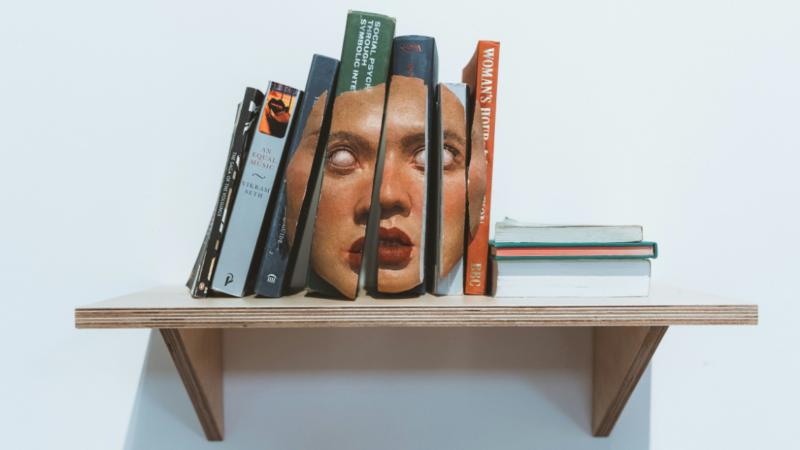Making sense of our connected world

My robot did my homework: AI applications and creativity at the university
The launch of ChatGPT and its overnight popularity created a stir in universities. Dominating the headlines were fears that this new technology would be detrimental to students developing critical thinking skills or worse yet lead to increased cases of plagiarism. In this blog post, we ponder how to use generative AI to enhance creativity at the university.
‘“My doggy ate my homework. He chewed it up,” I said.
But when I offered my excuse. My teacher shook her head.’
Crawley, 2004
But my dog ate my homework! This excuse of school children is timeless, it even has its own Wikipedia entry. However, new tech developments like ChatGPT, other Large Language Models (LLMs) or Text-to-Image Models will likely finally remove the blame from the poor family dog, to another culprit, generative AI — the future ghost writer of homework assignments.
Since its launch in November 2022, ChatGPT has received a great deal of attention both from scholars, who debate its merits and threats to scientific publishing and the science system, as well as educators pivoting between cautiously praising it and condemning it. Major concerns voiced are that generative AI will lead to more cases of plagiarism and be detrimental to students themselves actually engaging in learning and contribute to the death of the student essay.
All in all, the verdict is still out on ChatGPT. Now as we gear up for another academic year, we are once again revisiting the question of if and how generative AI applications should be integrated into higher education.
Anything AI can do, I can do better
Are generative AI applications killing creativity because all writing and imagery will look the same? Other than viewing generative AI tools such as ChatGPT merely as a threat or a helper, we believe that they can also give us the opportunity to rethink our writing practices: If we believe that good essays cannot be created by AI alone, what then makes a good essay? Could parts of the writing or design process benefit from AI tools? What parts require human creativity?
Creativity beyond AI
We know ChatGPT and other generative AI-tool outputs are limited in their creativity. This relates to how generative AI functions: For example, text generators streamline text and parrot back the most likely sequence of words, based on the many texts they were trained on — which can reproduce harmful content and stereotypes. While such texts may be useful when writing standard communication or filling content, producing something genuinely new is not what generative AI applications are meant to do — we as users need to recognise this when monitoring and evaluating their output. For essay writing, the lack of creativity within generated texts reminds us of the great importance that fresh ideas, new twists and out-of-the-box thinking play in the writing process. Because text generators aren’t creative but reproductive, students need to discover their very own creative ways of conceptualising and writing texts. ChatGPT’s generic writing alerts us to the creativity beyond AI that makes a good essay.
What happens when you let ChatGPT write a term paper? After the initial surprise that an AI tool generated an appealing structure, students in a class at the University of Applied Sciences Dresden quickly realised that neither the focus of the text nor definitions produced were appropriate for their discipline. And that they needed to dig deeper for better results. This method of testing AI-produced texts taught students critical thinking skills by challenging them to question AI results, and consider how to appropriately integrate them into their coursework.
Being creative with AI
Alternatively, new ideas could arise in dialogue with generative AI tools, especially when using a playful approach. AI tool and user can be considered co-workers — one collaborative unit tackling tasks together. In conversation with ChatGPT, creative ideas can sprout, grow, and take shape.
The interaction with an AI writing tool can lead to unexpected encounters with terms, concepts or text structures. Whether dismissing the images or texts generated by AI applications, accepting them or altering them, the user is pushed to creatively deal with AI results. As we adapt our prompts to get ChatGPT or Stable Diffusion to produce something outstanding, we engage in a co-creative interchange between technology and user.
We can see different practices being used at universities to explore this creativity potential as detailed by Abbey Bamford in conversation with design practitioners in Design Week, a design news outlet. In the article, the University of Leeds associate professor in graphic design, Dr. Catherine Stones encourages students to stay “AI-agile” and question if AI generated images contribute to stereotypes as well as copyright issues. Another respondent of the Ravensbourne University London also sees the potential of ChatGPT. Head of Creative Lab, Derek Yates explains that AI tools have the potential to free up the creative process by providing many options and quickly generated prototypes. Using generative AI for these tedious tasks helps prioritise conceptual development and other creative steps.
The human as the creator
With generative AI technologies and users working together, the essay or image may truly become a cyborg product, made by a mix of human and machine. Nonetheless, this should not lead us to regard the AI tool as an accountable creator of content. The unimaginative, stereotypical and in cases harmful content it reproduces remind us also of the ethical implications of AI use. The user needs to check AI generated output and the user needs to decide when to use AI and when not to use it. In the end, the human is the creator responsible for the content and the ghostwriter AI can not be held accountable for writing a bad or even harmful essay. Just like the family dog, it is the wrong one to blame.
Final thoughts
Fears and concerns about ChatGPT and other LLMs resonate with past discussions researchers have had concerning how Educational Technology (EdTech) affects the quality of education, a debate that continues today. These past and present discussions boil down to the same question — what role should technology play in our lives?
We explored different possible roles of AI tools in the classroom and how they relate to creativity: the unimaginative ghostwriter or the creative partner.
In conclusion, University leaders and teachers faced with digital change should think about how they can harness and regulate these new technologies, as means to foster creativity within classrooms and also build institutions that are resilient and creative.
This post represents the view of the author and does not necessarily represent the view of the institute itself. For more information about the topics of these articles and associated research projects, please contact info@hiig.de.

You will receive our latest blog articles once a month in a newsletter.
Open higher education
The Human in the Loop in automated credit lending – Human expertise for greater fairness
How fair is automated credit lending? Where is human expertise essential?
Impactful by design: For digital entrepreneurs driven to create positive societal impact
How impact entrepreneurs can shape digital innovation to build technologies that create meaningful and lasting societal change.
Identifying bias, taking responsibility: Critical perspectives on AI and data quality in higher education
AI is changing higher education. This article explores the risks of bias and why we need a critical approach.






